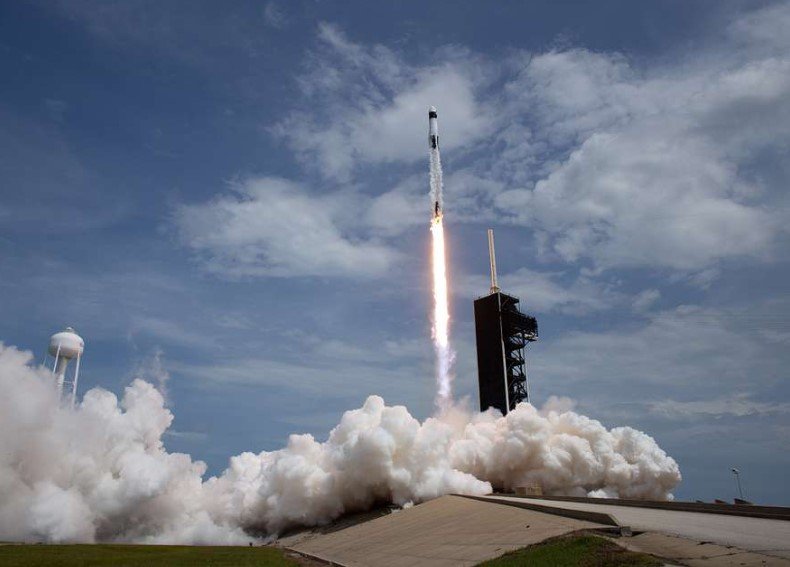Saudi Arabia has officially embarked on its first space research mission, launching aboard SpaceX’s Falcon 9 rocket. The mission, conducted under the “FRAM-2” project, aims to study the effects of microgravity on the human eye’s microbiome—a critical step in understanding astronaut health for long-duration space travel.
A Giant Leap for Saudi Space Ambitions
The Falcon 9 rocket lifted off early Tuesday, April 1, from Florida, carrying Saudi Arabia’s first dedicated space research mission. The project is a collaboration between Saudi researchers and SpaceX, underscoring the kingdom’s ambition to become a key player in space exploration.
Saudi Arabia has been investing heavily in its space sector, with a $2.1 billion commitment announced in 2020. The launch marks a major milestone, positioning the country alongside global space leaders.
Why the Human Eye?
Scientists have long studied how space conditions impact the human body, but the FRAM-2 mission focuses specifically on the microbiome of the eye. Understanding these changes is crucial for astronaut health, as prolonged exposure to microgravity can lead to vision problems.

Dr. Ayoub Al-Sabihi, director of the Falcon Research Mission, explained that the study will help develop medical protocols for future space travelers. This research could serve as a reference for international space agencies planning extended missions, including eventual travel to Mars.
Saudi Arabia’s Vision for the Stars
The kingdom’s space initiative is more than a scientific milestone—it’s a strategic move to integrate into the global space economy. The Saudi Space Commission, established in 2018, has been fostering partnerships with leading space agencies and private enterprises.
Some key aspects of Saudi Arabia’s space ambitions:
- Collaborations with international space agencies, including NASA and the European Space Agency.
- Investment in satellite technology for communication and Earth observation.
- Training Saudi astronauts to participate in future missions.
The FRAM-2 mission is just the beginning of a broader national space strategy aimed at making Saudi Arabia a leader in space science and technology.
The Broader Impact of FRAM-2
The significance of Saudi Arabia’s entry into space research extends beyond national pride. The findings from this mission could:
- Improve healthcare for astronauts by addressing vision-related issues.
- Contribute to long-term human spaceflight studies.
- Help develop solutions for vision problems experienced by astronauts on the International Space Station (ISS).
With space travel gaining momentum, such research is invaluable in preparing for future deep-space missions.
Looking Ahead: Saudi Arabia’s Next Steps in Space Exploration
The success of the FRAM-2 mission is expected to pave the way for future Saudi-led space projects. As the country strengthens its partnerships with global space organizations, more ambitious initiatives are likely to follow.
Saudi Arabia has already signaled interest in joining lunar exploration missions, participating in international space station experiments, and even developing its own satellites for scientific research. With this latest launch, the kingdom has positioned itself as a serious contender in the space sector.
This is just the beginning. As the global space industry expands, Saudi Arabia’s role will only grow, bringing new opportunities in research, technology, and innovation.
